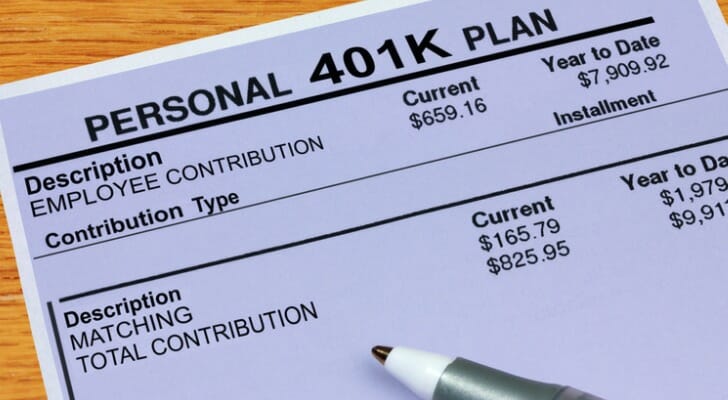An employer’s benefits package may be one of the biggest draws when you take a new job. However, it’s important to know that not all of these benefits may be available to you right away. Even if you find that the position isn’t right for you a few months in, leaving may mean forfeiting certain benefits including retirement plan contributions. In this situation, it’s extremely important to understand vesting schedules and how they can affect your plans. A financial advisor can help you target investments that fit your time horizon and investment objectives.
What Is Graded Vesting?
With graded vesting, an employee earns ownership of their workplace benefits in specific increments. Rather than hitting a particular milestone and going from 0% to 100% vested, they are instead given a percentage of vesting according to a graded schedule.
For example, an employee may receive 25% vesting for each year that they are employed in good standing with the company. After two years, the employee would be 50% vested in his or her benefits. After four years, they would be fully vested and remain so for as long as they hold employment with the company.
Graded vesting is largely beneficial to businesses, while also being a solid arrangement for their employees. It incentivizes employees to stick around for some time, while also offering them bits of growth along the way.
What Does “Vesting” Mean?

When it comes to certain employer-sponsored benefits – such as matched 401(k) contributions, a company pension or stock options – employees don’t always receive full ownership right away. Instead, the employee will often need to be vested before they can claim those benefits as their own.
Vesting is the process of gaining ownership of certain employer benefits over a specific period of time. An employee may increase his or her ownership in certain workplace benefits by maintaining employment for a specific number of years. The percentage they own typically grows annually, until they reach 100% vesting at a prespecified point.
This is designed to act as an incentive for new employees. If an employee isn’t fully vested and resigns from their position, retires or is fired, he or she may lose a portion of their benefits when they leave, rather than bringing them along. That can mean leaving free money on the table with a previous employer. However, if the employee is fully vested, the employer cannot retract or withdraw any earned benefits, even if the employer leaves the company.
Before considering leaving a company, calculate your current vesting percentage and how that would translate to benefits left on the table. When an employee leaves the company without being fully vested, the remaining benefits are retained by the company. They may even be put back into a collective benefits pool.
An Example of Graded Vesting in Action
Let’s say you were hired by a company that offers a dollar-for-dollar 401(k) contribution match, up to 6% of your annual compensation. You have a $100,000 salary, so the company is willing to contribute as much as $6,000 toward your retirement plan each year.
The first year you’re with the company, you put $6,000 into your 401(k) plan. The company would then match that amount fully. You plan to continue with this contribution schedule each year moving forward.
Now, let’s assume the company has a graded four-year vesting schedule, with 25% vesting offered each year. If you were to leave the company any time before the end of the fourth year, when you become fully vested, you’ll walk away without the full contribution match offered by your employer.
Below is a visual breakdown of the example situation above. However, this doesn’t account for any investment returns your 401(k) might see over time.
Example of How a Graded Vesting Schedule Works Over a 4-Year Period
| Year | Your Contribution | Company Contribution | Total 401(k) Balance | Percent Vested | Balance Owed | Amount Not Vested |
| 1 | $6,000 | $6,000 | $12,000 | 25% | $7,500 | $4,500 |
| 2 | $6,000 | $6,000 | $24,000 | 50% | $18,000 | $6,000 |
| 3 | $6,000 | $6,000 | $36,000 | 75% | $31,500 | $4,500 |
| 4 | $6,000 | $6,000 | $48,000 | 100% | $48,000 | $0 |
As you can see, if you were to walk away after the first year, once you’d reached 25% vesting, you would leave a minimum of $4,500 in free employer contributions on the table. However, if you wait to leave until the end of year four, when you’re 100% vested, you will be able to keep the full $24,000 in employer contributions made to your retirement account.
Comparing Graded Vesting to Other Types of Vesting
Graded vesting isn’t the only type of vesting you’ll encounter in the workforce. Two other methods of vesting that are quite common are cliff vesting and immediate vesting. Each of these have their pros and cons, and some benefit employers more than employees, and vice versa.
Immediate vesting is exactly what it sounds like: Your contributions are entirely your own from your first day on the job. This style of vesting is incredibly advantageous for employees, as there’s no restriction on your account whatsoever. On the flip side, it doesn’t incentivize sticking around for the long haul as much as graded vesting does.
Cliff vesting is much different than both graded and immediate vesting. More specifically, it requires an employee to hit a specific date in order to be fully vested. This transition happens all at once, hence the name “cliff,” and it means you go from 0% to 100% vesting at one time. The specific date is usually preset at, say, 1 or 2 years of employment.
Cliff vesting is the most employer-focused version of vesting, as it entirely takes employees’ access to their 401(k) away until the date in question. That leaves immediate vesting as the most employee-friendly option, cliff vesting as the most employer-friendly option and graded vesting right in the middle.
Bottom Line

Vesting is a common tool to encourage employee retention. Rather than offering full benefits upfront, employees are required to stay in good standing with the company for a specific period of time in order to receive the entirety of their benefits. With a graded schedule, the vesting percentage increases at set intervals (such as each employment anniversary), reaching 100% after a particular number of years. Leaving a company before reaching full vesting can be a costly decision for many employees.
Tips for Vesting Workplace Benefits
- A financial advisor can help ensure that your retirement savings strategy is on the right track, taking into account factors such as employer matches and vesting schedules. Finding a qualified financial advisor doesn’t have to be hard. SmartAsset’s free tool matches you with up to three financial advisors who serve your area, and you can interview your advisor matches at no cost to decide which one is right for you. If you’re ready to find an advisor who can help you achieve your financial goals, get started now.
- Opening a 401(k) can have many great benefits for your long-term retirement savings potential. SmartAsset’s free 401(k) calculator can help you determine how much your account might earn over time.
- Planning ahead for your retirement can pay huge dividends. Some things to focus on are where you plan on retiring, what you expect your pool of savings to look like, how much you’re in line for with Social Security and what kind of lifestyle you’d like to have. Use SmartAsset’s retirement calculator to do some projections.
Photo credit: ©iStock.com/Erdark, ©iStock.com/GaryPhoto, ©iStock.com/Douglas Rissing
